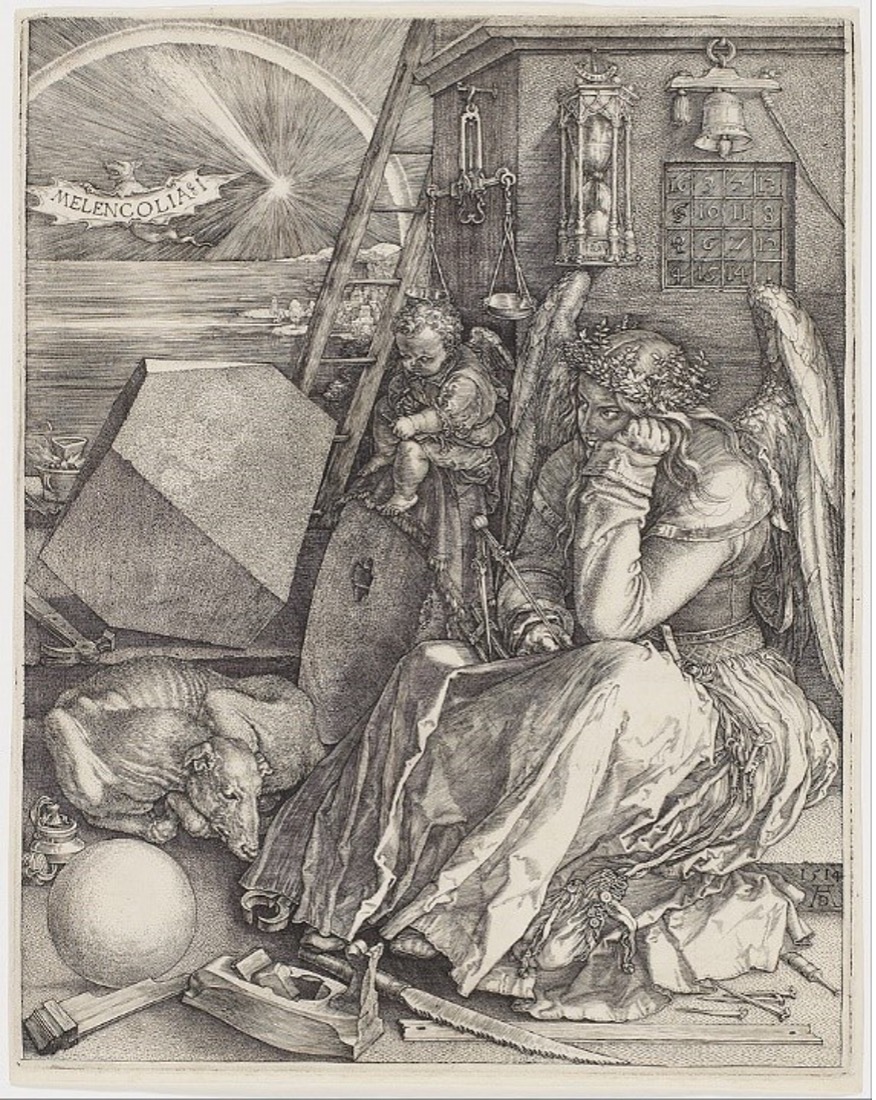Did you know that being an enduring artist, persevering with steady effort and good cheer through artistic challenges, can lead to becoming a genius? Well, that is what people thought during the Middle Ages and what my upper school students discovered this October.
By the second quarter, students in my art room are engaging with more challenging art materials and concepts and must persist to complete a project and hopefully witness the fruits of their labor. In our school’s curriculum, all students in kindergarten through eighth grade are required to take a yearly art class and witness the breadth and depth of a rigorous classical art curriculum. Being in art class poses a real challenge for students who do not believe they possess inherent artistic talent. “Artistic” or “creative” are not words they would use to describe themselves or skills they wish to attain. Unfortunately, there is no easy remedy for this dilemma, but through a well-designed art curriculum and an open-mindedness towards the study of art, all students can develop and enhance their creativity. The “risk” students take by committing to art class provides them with opportunities to gain new skills, think differently, and persevere through challenges. These traits are essential elements for nourishing the creative mind and developing creative problem-solving that can help students identify alternative solutions when conventional thinking fails.

Beyond the basic challenges of taking art, this month two of my classes had particularly daunting assignments: the high school students were attempting to paint a realistic still life by only varying the value of one color, while the seventh grade students were engaging in plein air painting and endeavoring to give an impression of what they saw despite the challenges of painting outdoors. There were moments during each of these two projects where a few students questioned the relevance of the art exercise and the benefit to their lives outside of class. They expressed a sense of frustration with their inability to accomplish the assignment and lack confidence in their abilities.
Whenever this happens in a class, it is the perfect time to share a story of genius and creative perseverance personified in the artwork Melencolia I.
Albrecht Dürer’s Melencolia I, a master engraving, was made between 1513 and 1514. This engraving is one of three works that relate to the three kinds of virtue in medieval scholasticism—moral, theological, and intellectual. In medieval philosophy, melancholia, or melancholy, was one of four humors that positively or negatively influenced a person. Medieval melancholy, associated with black gaul, is not unlike our modern idea of sadness or depression. In Medieval Europe, melancholy was the least desirable of the four humors and artists were most likely to succumb to this sort of “insanity” through striving yet failing to achieve a desired level of perfection in their artwork. This “insanity” is certainly the feeling that my students sometimes get and prompts them to say things like, “this is impossible,” “there is nothing more I can do to make this better,” “I’m done trying to be creative,” or “I just can’t do it!”

Dürer’s Melencolia I is a visual portrayal of the intellectual situation an artist finds himself in during the process of creation. The artwork depicts a brooding, winged figure, eclipsed by shadow. Objects associated with geometry and measurement, building blocks for creation and necessary for an artist like Dürer to achieve absolute beauty through perfect proportions, surround the figure. The winged figure cannot fly, like an artist who is paralyzed and unable to create or who doggedly strives after an unachievable result. However, the artwork also contains a sense of hope suggested by a ladder leading from the place of sadness and “insanity” to something higher and better outside of the picture plane.
Hope for an artist plagued by melancholy does exist and is achievable through perseverance and repeated cheerful practice. Renaissance thinkers suggest a meaningful link between melancholy and creative genius, and not just creative genius but actual genius. The Roman numeral “I” in Melencolia I hints that creative habits and mindset make up the first level in the hierarchy of the three levels of genius. Being open to creativity comes with its risks, but my students now agree that perseverance in creative pursuits is worth accidental genius.

